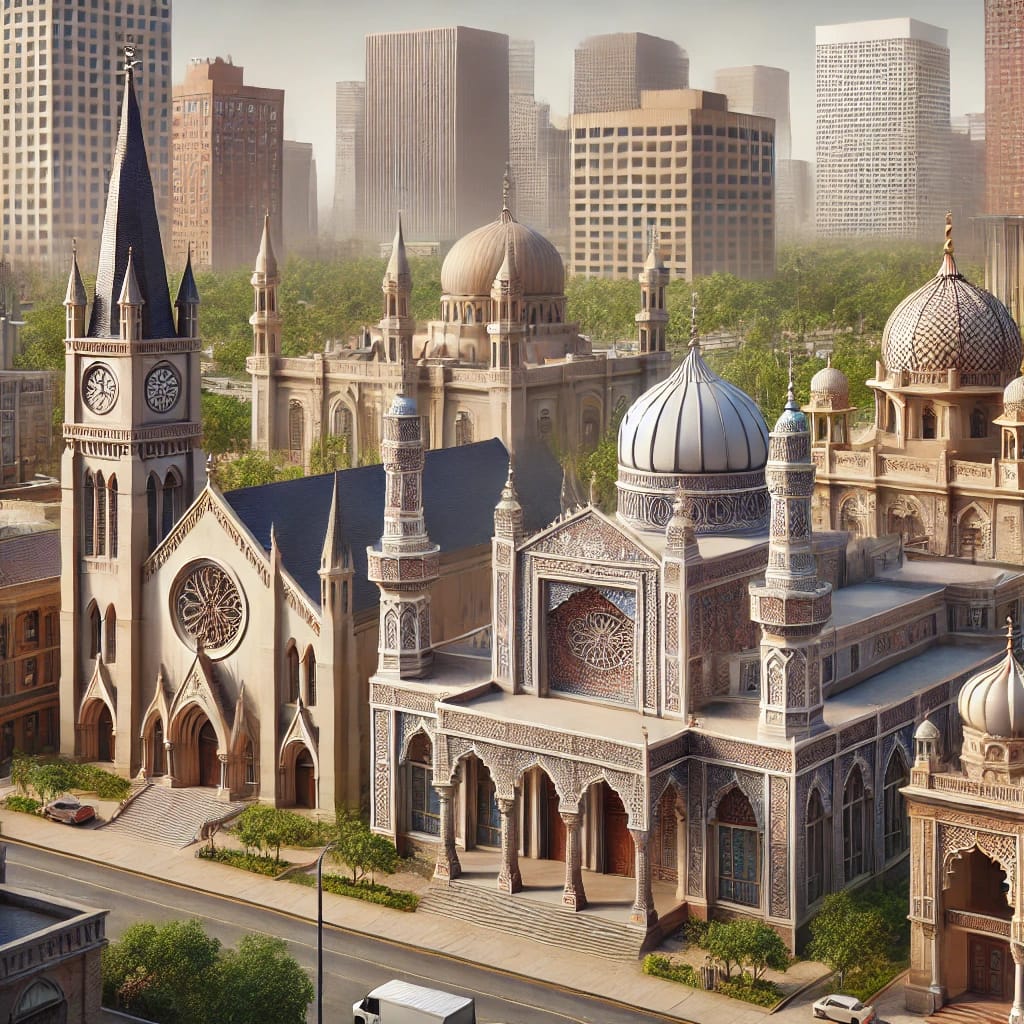
Houston’s Religious Diversity: A Reflection of Its Cultural Mosaic
Houston is one of the most culturally diverse cities in the U.S., and its religious architecture reflects this diversity. From historic cathedrals to modern mosques, the city’s sacred spaces embody a wide range of architectural styles and cultural influences. These buildings serve not only as places of worship but also as landmarks that tell the story of Houston’s growth, immigration, and community spirit.
Houston’s religious diversity includes Christian churches, Jewish synagogues, Muslim mosques, Hindu temples, and Buddhist pagodas, each contributing to the city’s architectural landscape. The different architectural styles seen across these buildings reflect the distinct traditions of the communities they serve. Yet, many of these buildings incorporate elements from other cultures, creating a unique blend of aesthetics that speaks to Houston’s multicultural identity.
Historic Churches: Gothic Revival and Romanesque Styles
Some of Houston’s most iconic religious buildings are its historic churches, which display traditional European architectural styles. Christ Church Cathedral, built in 1876, is one of the oldest buildings in Houston. Designed in the Gothic Revival style, it features pointed arches, stained glass windows, and a soaring bell tower that stands as a landmark in downtown Houston.

Similarly, Annunciation Catholic Church, completed in 1874, showcases Romanesque architecture with rounded arches and decorative stonework. Both churches reflect the influence of European immigrants who settled in Houston during the 19th century, bringing with them the architectural styles of their homelands. These churches remain active congregations while serving as important historical landmarks in the city.

Modern Places of Worship: Contemporary and Minimalist Designs
In contrast to the ornate styles of older churches, many modern religious buildings in Houston embrace minimalist and contemporary design principles. For example, the Chapel of St. Basil at the University of St. Thomas, designed by architect Philip Johnson, features a simple geometric form. Its sleek white walls, sharp angles, and absence of ornamentation reflect the modernist approach to sacred architecture.

Another example is Congregation Beth Israel, one of the oldest Jewish congregations in Texas. The synagogue’s current building, completed in the 1960s, combines modern architecture with elements of traditional Jewish design. The clean lines and subtle detailing create a serene atmosphere, emphasizing spirituality through simplicity.

Mosques, Temples, and Cultural Centers: A Global Influence
Houston’s mosques, temples, and cultural centers highlight the city’s international connections. The Islamic Da’wah Center, located in downtown Houston, is both a mosque and a cultural center. Its architecture combines Islamic elements, such as intricate tile work and calligraphy, with modern design. The center serves as a place of worship and outreach, reflecting Houston’s role as a global city.

The BAPS Shri Swaminarayan Mandir, a Hindu temple located in Stafford, a suburb of Houston, is another architectural marvel. Built with hand-carved marble and sandstone, the temple follows traditional Indian architectural principles. Its intricate carvings and domes transport visitors to a different world, offering a glimpse into the rich traditions of Hindu worship.

Similarly, the Vietnamese Buddhist Pagoda blends Southeast Asian aesthetics with modern construction techniques. These temples and cultural centers serve their religious communities and attract visitors interested in learning about different cultures and architectural styles.

The Future of Religious Architecture in Houston
Houston’s religious architecture continues to evolve as the city grows and new communities emerge. Future religious buildings will likely focus on sustainability and inclusivity, incorporating eco-friendly materials and design elements that make spaces accessible to people of all abilities. Some places of worship already adopt multi-use spaces, where community activities, education, and worship coexist under one roof.
Innovations in technology are also influencing the design of religious spaces, with many incorporating advanced lighting systems, acoustics, and digital platforms to enhance the worship experience. As Houston’s population becomes even more diverse, its religious architecture will continue to reflect the city’s changing face, blending tradition with modernity and creating spaces that inspire connection and reflection.